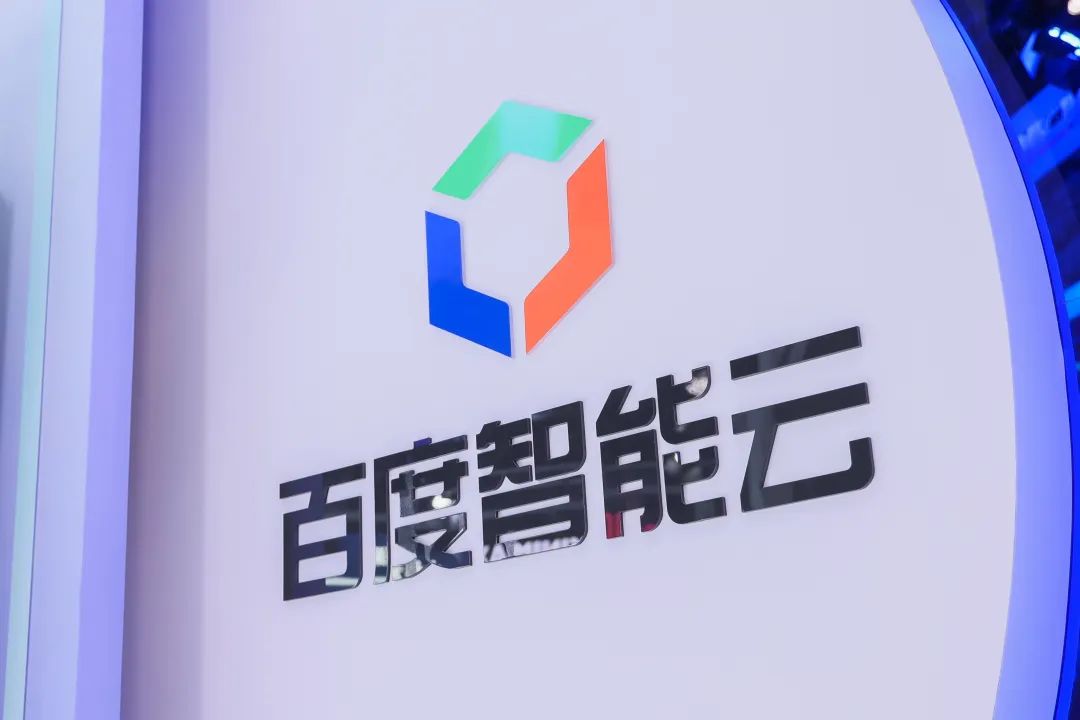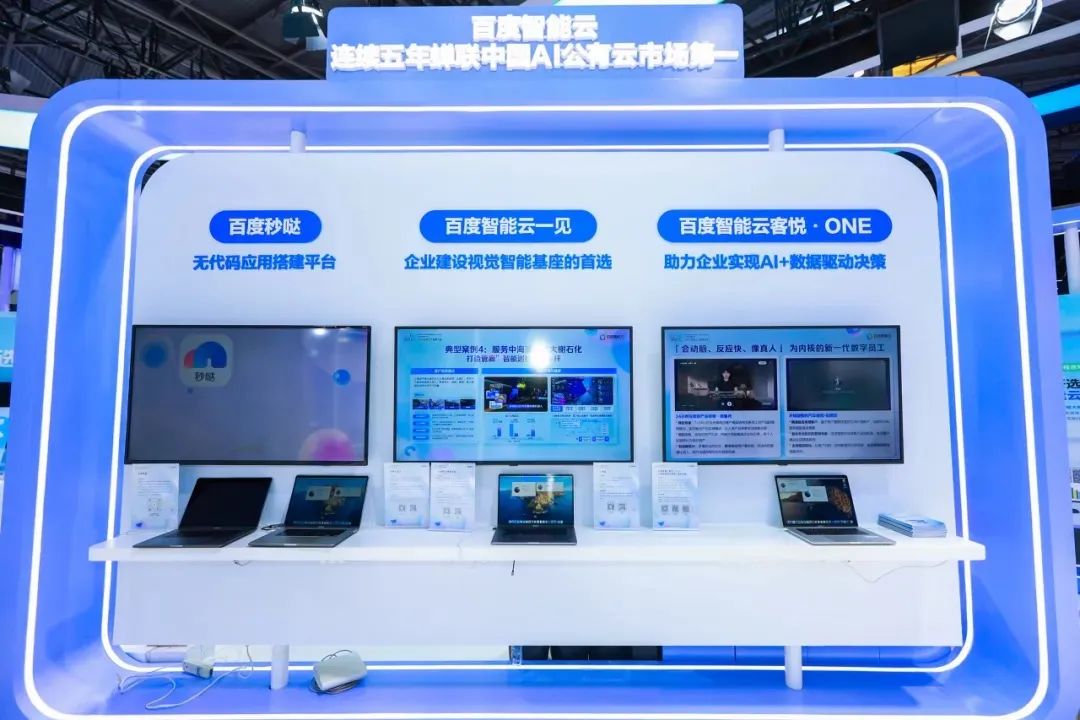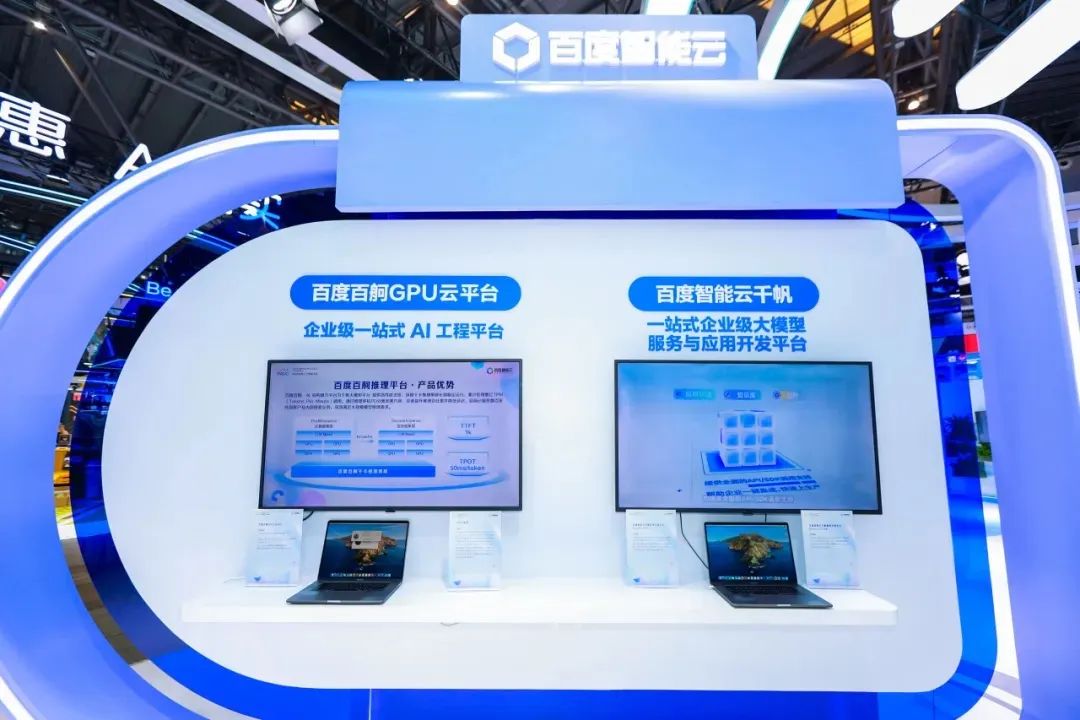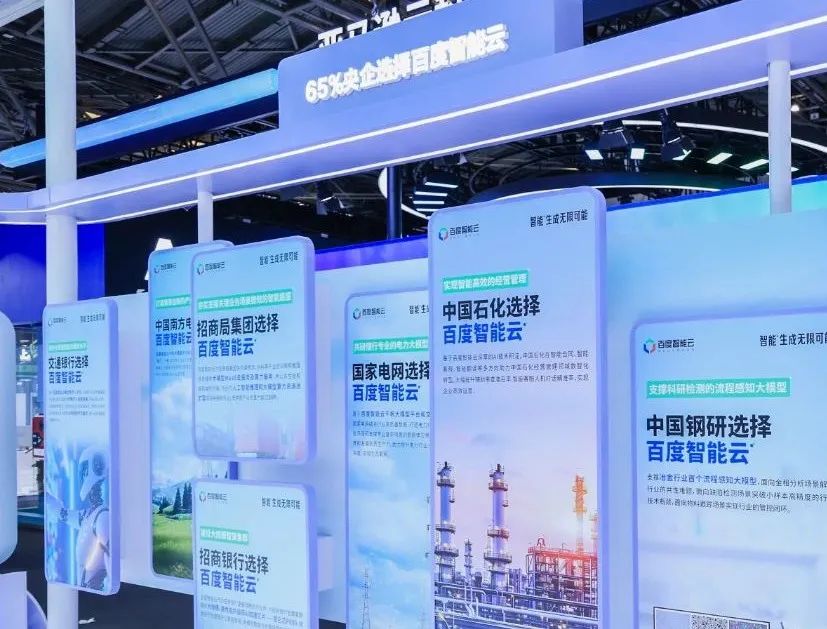Baidu Intelligent Cloud Establishes a Robust AI Pathway in the Energy Sector
![]() 08/03 2025
08/03 2025
![]() 575
575

Behind the escalating market demand and the upward trajectory of Baidu Intelligent Cloud's business lies a cornerstone: its well-established AI enterprise evolution system. This system encompasses the increasingly recognized Kunlun Chip, deeply cultivated AI SaaS products tailored for the energy sector, and continuously refined service and delivery models.
Author | Piye
Produced by | Industrialist
Li Wen (pseudonym) notes a stark difference in the industry's atmosphere this year. "Last year, many enterprises were content with merely getting started, but now they are demanding tangible results and application value, preparing to integrate AI into their production environments," he says.
As the head of industry solutions for Baidu Intelligent Cloud's energy industry, Li Wen and his team are at the forefront of AI application in the energy sector, having been active since the advent of large models in 2023.
Recently, news of Baidu Intelligent Cloud's success spread virally on social media: in the past quarter, the company ranked first in bid amounts within the energy industry, surpassing the 200 million yuan mark.
How significant are these figures? In 2024, the total bid amount for large AI models amounted to 40 billion yuan. Among the top ten bidders, not a single enterprise, including Baidu, exceeded 1 billion yuan, with only two surpassing 300 million yuan.
How did Baidu achieve these impressive numbers? Or, what does the surging demand in the energy sector, a leading domain for domestic central and state-owned enterprises, signify in 2025, the year when large model applications become the main theme? And what role does Baidu Intelligent Cloud, as an AI cloud service provider, play in this context?
At Baidu's Ark Building, we met with Baidu Intelligent Cloud's energy team. Over a two-hour discussion, we aimed to understand the real-world impact of AI large models in the energy industry from their perspective, both in recent months and throughout 2025.
During the interview, we delved into Kunlun Chip, full-stack independent research and development, product service systems, and Baidu Intelligent Cloud's self-evolution.
I. The True Impact of AI Productivity in 2025:
"Industry Application Boom Fuels Platform and Compute Growth"
In August 2024, a team from Baidu Intelligent Cloud embarked on a special mission: exploring real-world application scenarios for power large models with State Grid personnel.
This followed a 2020 strategic cooperation agreement between Baidu and State Grid to innovate AI in the power industry. In mid-2024, State Grid selected Baidu for strategic cooperation in large models, encompassing verification, design, development, and construction, as well as the exploration and real-world application of typical power large model scenarios.
Despite winning the bid, for Baidu Intelligent Cloud's energy team, this was a new challenge. In 2024, most large model vendors were still focused on competing in compute and platform layers, with limited investment in exploring real-world application scenarios.
"The process lasted about four months, from August 2024 to the end of the year, when the State Grid Guangming Large Model conference was held. We researched and explored with State Grid personnel on which scenarios large models could be implemented," Li Wen recalls. "Ultimately, we successfully demonstrated application scenarios in six core business domains."
One such achievement was the "Marketing Power Supply Plan Agent" showcased at the 2025 Smart Economy Forum. This agent enables power enterprises to more accurately identify user needs, quickly generate multiple power supply plans, and significantly streamline business processes.
If in 2024, such scenario research and exploration were partial, today, one year later, this demand is becoming "increasingly common, clear, and strong," aligning with Li Wen's earlier mention of enterprises demanding "real production" AI.
Broadly, this AI demand towards real production has fueled growth in two areas: Firstly, compute demand is constantly increasing. Most large energy central enterprises have centralized procurement plans this year, with many completing tendering and procurement in the first half. Additionally, to support application development, more enterprises are building large model development platforms, enabling rapid internal application deployment and centralized management.
This year's large model bids also reflect this trend. Besides compute orders, enterprises increasingly consider Agent development platform capabilities when selecting bidding service providers, further emphasizing AI's real-world expression in applications and specific scenarios.
Furthermore, demand for vertical domain models is emerging. Li Wen notes that previously, energy central and state-owned enterprises mostly demanded industry-wide large models. However, now, model demands are becoming more refined, such as wind power, hydrogen energy, and other vertical domain models, which are becoming clear demands of energy enterprises.
In 2023, large models focused on technical parameters and AGI curves. In 2024, attention shifted to Agent intelligent agent construction and definition. In 2025, AI begins to consider practical aspects like scenario implementation and vertical domain model expression.
This is no easy task, even in the energy sector with robust data and information technology. Like the State Grid and Baidu Intelligent Cloud cooperation, significant manpower was invested in targeted AI exploration and experimentation in the early stages. For more segmented energy sector enterprises and group subsidiaries, precise AI expression requires even more effort.
Challenges lie not only in scenarios but also in products and compute. With more specific demands, few market enterprises can provide corresponding scenario products, such as safe production operations, customer service, and comprehensive scenario solutions.
Currently, many Agent development platforms lack sufficient industrial know-how and workflow construction components, hindering the implementation of Agent platform-based intelligent agents.
Compute challenges also exist. As the energy sector predominantly adopts privatized deployment, enterprises often purchase domestically produced chips as underlying compute support. However, due to performance bottlenecks, even for inference-level demands, corresponding chip costs are considerable.
"Clear demands, clearer bottlenecks"—this is the real-world challenge faced by the Baidu Intelligent Cloud team in 2025.
II. "Products + Services + Compute"
The Genuine AI Advancement Behind the Triple Pillar
Time rewinds to early 2024. When Baidu Intelligent Cloud released a series of applications, a new team of over a hundred people quietly established within the company—the "Large Model Service Team" mentioned by Li Wen.
This team's core task is to ensure AI's real-world application in enterprise scenarios. Different personnel face various industry sectors, providing enterprises with a series of AI implementation support and guarantees. Simultaneously, they help enterprises cultivate AI talents through courses, enabling them to truly build an AI foundation.

This is a core action of Baidu Intelligent Cloud. Essentially, Baidu aims to transfer and reuse AI implementation experience from cooperating with large enterprises like State Grid and China Southern Power Grid through the service team, helping other energy enterprises quickly find their AI implementation value points.
This special "design" extends beyond services to products.
Li Wen explains a "special closed loop" within Baidu Intelligent Cloud: during the delivery team's entire service process, once encountering customer demands with commonalities, the team transmits them to the product department in the form of "demand cards." After analysis, the product department quickly iterates relevant AI products, internalizing the latest demand satisfaction capabilities into updated AI modules like Qianfan, Baige, Keyue, and Yijian.
The iterated products are then re-invested by the SA and delivery teams into real AI enterprise scenarios, forming a closed loop of "AI implementation—product evolution—demand satisfaction" across Baidu Intelligent Cloud's AI delivery model.
Furthermore, underpinning this self-iterative closed loop is Baidu Intelligent Cloud's powerful, continuously advancing foundation: Kunlun Chip at the compute layer.
At the end of 2024, Kunlun Chip successfully lit up the third-generation 10,000-card cluster, the first domestically developed 10,000-card cluster. This year, the cluster expanded to 30,000 cards and 10,000 PFLOPS.
"Kunlun Chip P800's memory specifications are 20%-50% higher than similar mainstream GPUs, making it more friendly to MoE architectures," Li Wen explains. This means, for example, with Kunlun Chip, enterprises only need a single machine for Deepseek deployment, while other hardware vendors require at least two or more machines, significantly saving compute costs for enterprises.
Clearly, with the acceleration of Agent implementation, Kunlun Chip's advantages are translating into Baidu Intelligent Cloud's market advantages in AI large models. For instance, in the bidding for China Southern Power Grid's first batch of "2025 AI Compute Power Servers (Training Servers)" at the end of March this year, Baidu won over 60% of the share with Kunlun Chip. Recently, Baidu Intelligent Cloud also lit up a 1,000-card cluster with China Southern Power Grid, providing an independently controllable compute engine for the construction of a new power system.
"We've observed that since this year, training and inference demands have been exploding. Whether it's group-wide or local enterprise demands, the growth rate on the compute side is evident. This didn't exist last year."
III. Baidu Intelligent Cloud
AI Full-Stack Service Capability "Grown" from Long-Term Practice
There's more to the story.
Broadly, behind Baidu Intelligent Cloud's large Q2 bid amount is the fact that sectors like energy have always been areas of deep cultivation.
This deep cultivation encompasses not only the experience since the advent of AI large models but also the cloud vendor's accumulated service knowledge in the energy industry over many years. "We're almost the service provider with the longest track record in the energy industry in China. Like many benchmark enterprises, we've served them for years, even before large models emerged," Li Wen tells Industrialist. "After AI large models, most energy central and state-owned enterprises are also our customers."
Indeed, this is the case. According to incomplete statistics, including the State Grid, China Southern Power Grid, the "Three Barrels of Oil," the "Five Power Generation Groups," and many local energy groups, gas, and heating companies, Baidu Intelligent Cloud now serves over 200 energy enterprises.
The significance of this "deep cultivation" lies in the fact that the products now at the forefront of Baidu Intelligent Cloud's AI matrix have already been implemented and served in many energy enterprises' internal scenarios.
For instance, the visual analysis platform Yijian, according to the relevant head of Baidu Intelligent Cloud's energy team, embarked on one of its pioneering projects by constructing a video intelligent recognition system and an intelligent operation platform centered around the requirements of Longyuan Power Group, the world's largest wind power operator, with a three-tier management structure spanning "Longyuan Power Headquarters—Provincial Monitoring Center—New Energy Stations." This comprehensive setup encompasses over 200 wind farms and more than 12,000 wind turbines.
In executing such projects, substantial input from the client's perspective significantly contributed to refining and optimizing Yijian's products, ensuring they continually align with real-world user scenarios and habits. Furthermore, with the progression of model technology, the platform has undergone iterative upgrades, transitioning from small models to a fusion of large and small models.

Similarly, Keyue, a product that has recently secured numerous bids, was initially implemented in numerous energy enterprise scenarios leveraging NLP small models. Nowadays, it addresses customers' evolving AI customer service needs, leveraging advancements in AI capabilities.
Products like Qianfan and Baige also have rich histories. During the "small model" era, the predecessors of these products already endowed many energy enterprises with certain intelligent capabilities. With the advent of the AI large model wave, the iterated versions of these products have gradually transformed into new service capabilities of Baidu Intelligent Cloud, in tandem with emerging AI demands.

"Baidu has been serving enterprises with AI at its core for a considerable period, even during the previous small model era, when many service providers had yet to conceptualize their own AI strategies," Li Wen shared with Industrialist. "Currently, the products we offer externally are the culmination of years of refinement and possess considerable prowess across various sectors."
This prolonged "deep cultivation" in the industry is complemented by the infusion of updated practical insights.
Over the past two years, Li Wen and Baidu Intelligent Cloud's energy team have devoted substantial time to collaborating with energy enterprises at the forefront of AI co-creation. This includes the previously mentioned power supply and marketing agent, which represents a collaborative effort between the State Grid, Baidu Intelligent Cloud, and third-party ecological partners.
This endeavor encompasses not only underlying AI technology but also a range of tasks such as data annotation, workflow construction, logic sorting, and integration with existing data interfaces. For both Baidu Intelligent Cloud and energy enterprises, these represent novel attempts, transitioning from 0 to 1.
Behind the growing market demand and the positive trajectory of Baidu Intelligent Cloud's business lies a pivotal factor: a well-established Baidu Intelligent Cloud AI enterprise evolution system. This system encompasses the Kunlun Chip, which is gaining increasing recognition from enterprises, deeply cultivated and capable AI SaaS products tailored for the energy sector, and service and delivery models that are continually practiced, implemented, and refined.
In fact, this proportional relationship is not exclusive to the energy sector. According to the latest bidding data from general large model vendors, China's large model-related projects witnessed explosive growth in the first half of 2025: the cumulative number of winning projects reached 1,810, with a total value exceeding 6.4 billion yuan, surpassing the total for the entire year of 2024. Among them, Baidu Intelligent Cloud solidly maintained the "double first" position with 48 winning projects and a winning amount of 510 million yuan.
In the realm of central state-owned enterprises, represented by the energy and finance sectors, 65% of central enterprises have opted for in-depth cooperation with Baidu Intelligent Cloud. These figures also contributed to Baidu Intelligent Cloud's 42% year-on-year growth in the first quarter of 2025.

"Currently, energy and power enterprises are actively embracing industry-wide large models, focusing on high-value scenarios to deepen AI deployment. As technology evolves and the value of industrial applications becomes more prominent, generative AI will give rise to new intelligent infrastructure. Baidu Intelligent Cloud is committed to investing in supporting the energy and power industry in exploring more application scenario values, thereby helping to create a new engine for the energy revolution," Yuan Fuyu, Vice President of Baidu Group, further elaborated at the relevant energy forum of this year's WAIC Conference.
The development of AI technology is founded on a bedrock of numerous scholarly articles and extensive experiments, yet its implementation hinges solely on the meticulous polishing of individual projects and product details. This process demands reverence for the industry, patience, and a profound understanding of technology. It also involves the translation of AI evolution from capabilities to industrial expression and ultimately to product services.
These are precisely the core foundations that Baidu Intelligent Cloud has built over the past three years, and they now constitute the impressive responses delivered by this established AI service provider, not only in the energy sector but also throughout the second quarter of 2025.
Today, new narratives continue to unfold.
"We are now prioritizing the enhancement of accuracy and stability, offering more support and timely feedback for integrating AI into the core value creation process of enterprises. This includes developing more specific workflows for production processes, enabling enterprises to better apply AI to critical areas such as production and operation," Li Wen informed us. "The implementation of large models is a systemic project that ultimately necessitates the participation of everyone to jointly ensure its success."








